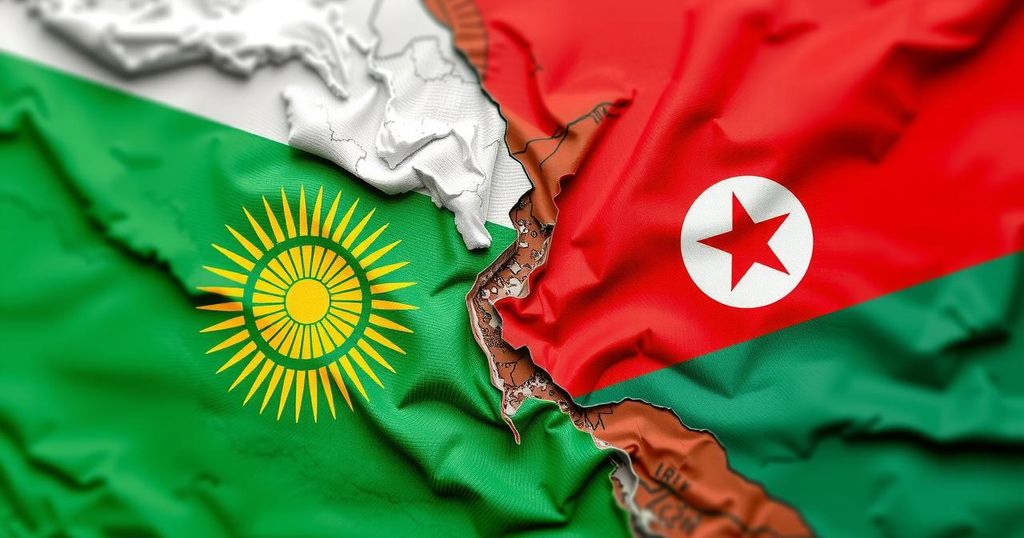Kyrgyzstan and Tajikistan Finalize Border Deal, Ending Long-Standing Disputes
Kyrgyzstan and Tajikistan reached a border demarcation deal on December 4, 2024, resolving the last contested frontiers between the two nations. This agreement follows decades of conflict, particularly violent clashes in recent years over resource access. The deal reflects an improving diplomatic relationship, signaling potential stability in Central Asian geopolitics amidst shifting power dynamics.
On December 4, 2024, Kyrgyzstan and Tajikistan reached a significant agreement regarding the demarcation of their long-disputed border, effectively resolving the final contested segment between these Central Asian nations. This development is seen as a path to peace, following decades of periodic clashes related to the management of natural resources, particularly water, in a region marked by challenging topography. The agreement was announced during a meeting in Batken, overseen by the heads of the national security services from both countries, indicating a notable improvement in diplomatic relations.
The 970-kilometer border, notoriously difficult to navigate due to its mountainous landscape, has been a source of tension since the dissolution of the Soviet Union in 1991. The recent strife escalated in 2022, with violent confrontations resulting in significant casualties. Following an intense period of discussions, Kyrgyz President Sadyr Japarov and Tajik President Emomali Rakhmon had previously engaged in dialogue at a UN summit, leading to the recent consensus. Images of the two security officials exchanging handshakes were publicly shared, symbolizing the newfound cooperation.
Historically, the border dispute is rooted in the arbitrary territorial divisions instituted during the Soviet era, which have led to lingering conflicts regarding access to vital resources. The recent deal signals a thaw in relations among Central Asian countries, reflecting a broader trend of cooperation following the regional turmoil exacerbated by Russia’s military engagements in neighboring Ukraine. Despite difficulties in negotiations due to the lack of access to Soviet-era maps, both nations have expressed a commitment to finalize the demarcation process in a manner indicative of mutual respect and diplomacy.
Furthermore, this agreement underscores a shift in regional dynamics; with traditional powers like Russia preoccupied, other nations such as China and Turkey are stepping in to forge alliances in Central Asia. Previous localized skirmishes have evolved into broader confrontations, prompting both nations to seek a more definitive resolution. As Kyrgyzstan and Tajikistan move forward in their negotiations, the successful culmination of this agreement serves as a hopeful precedent for future cooperation in an increasingly volatile geopolitical landscape.
The dispute over the Kyrgyz-Tajik border has historical roots dating back to the Soviet administrative divisions. With the dissolution of the USSR in 1991, unresolved territorial issues resurfaced, leading to recurring skirmishes between the two nations. Resource scarcity, particularly water, has added urgency to these territorial disputes, as the region faces the impacts of climate change. The previously unresolved sections of the border have been a flashpoint for conflict, with significant violence occurring in 2021 and 2022, prompting regional and international attention. In light of Russia’s ongoing military distractions, the agreement signifies a shift towards regional self-reliance and collaboration.
The recent agreement between Kyrgyzstan and Tajikistan to finalize the demarcation of their border represents a substantial step towards resolving a long-standing territorial dispute rooted in historical tensions. As both nations navigate their way towards peaceful relations, the successful negotiation signals a potential realignment in Central Asian geopolitics, with other regional powers ready to assert influence in the post-Soviet landscape. This development may very well encourage further collaboration among the ex-Soviet states, paving the way for stability in a historically volatile region.
Original Source: www.thehindu.com




Post Comment